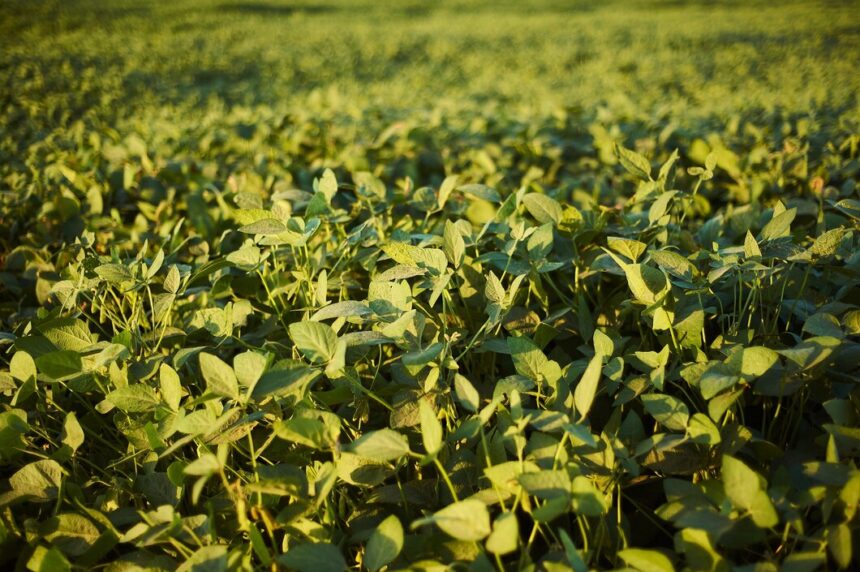Soybeans are a valuable crop in South Africa, known for their high protein content and versatility. Successfully growing soybeans involves careful management from planting through to harvest and storage. Here’s a detailed guide to help South African farmers through each stage of soybean cultivation.
1. Land Preparation
a. Soil Type and Preparation:
- Soil Requirements: Soybeans thrive in well-drained, loamy soils with a pH of 6.0 to 6.8. Avoid heavy clay soils and those prone to waterlogging.
- Preparation: Begin by clearing the land of weeds and debris. Use a plow or disc harrow to break up the soil and create a fine seedbed. Incorporate organic matter or compost to improve soil structure and fertility.
b. Machinery:
- Tractors: Essential for plowing, disking, and leveling the soil.
- Seed Drill: For precise planting and ensuring proper seed depth and spacing.
2. Planting
a. Timing and Seed Selection:
- Timing: Plant soybeans after the last frost, typically from late October to November in South Africa.
- Seed Selection: Choose high-quality, disease-resistant soybean varieties suited to your local climate and soil conditions.
b. Planting Process:
- Depth and Spacing: Plant seeds 2-4 cm deep, with rows spaced 38-76 cm apart. Use a seed drill or planter for consistent depth and spacing.
- Inputs: Apply a pre-plant fertilizer based on soil test recommendations. Soybeans benefit from inoculation with Rhizobium bacteria to fix atmospheric nitrogen.
3. Growth Stages
a. Germination and Seedling Stage:
- Duration: Germination takes about 5-10 days. The seedling stage lasts 2-3 weeks.
- Care: Keep the soil consistently moist but not waterlogged. Monitor for early signs of pests and diseases.
b. Vegetative Stage:
- Duration: This stage lasts from 3-6 weeks after germination.
- Management: Ensure adequate water and nutrients. Begin weed control to reduce competition for resources.
c. Flowering and Pod Development:
- Duration: Flowering starts 6-8 weeks after planting, with pod development following.
- Care: Continue to manage water and nutrients. Monitor plants for signs of nutrient deficiencies or imbalances.
d. Maturity and Harvest:
- Duration: Soybeans mature 80-120 days after planting.
- Indicators: Harvest when pods turn brown and dry, and seeds inside are firm. Test for moisture content; ideally, it should be around 13-15%.
4. Water Management
a. Requirements:
- Total Water Needs: Soybeans require 400-600 mm of water throughout the growing season, depending on climate conditions.
- Frequency: Water during dry periods, especially during critical stages like flowering and pod filling.
b. Irrigation:
- Types: Drip or sprinkler irrigation systems can help manage water efficiently. Ensure uniform distribution to avoid water stress.
5. Fertilization
a. Types and Timing:
- Pre-Plant Fertilizer: Apply a balanced fertilizer (e.g., 2:1:2) based on soil test results.
- During Growth: Side-dress with additional nitrogen, phosphorus, and potassium as needed, especially if soil tests indicate deficiencies.
6. Pest and Disease Management
a. Common Pests:
- Soybean Aphids: Monitor and use insecticides if populations exceed threshold levels.
- Soybean Loopers: Use insecticides if damage is significant.
b. Common Diseases:
- Rust: A fungal disease causing reddish-brown lesions. Apply fungicides if symptoms are present.
- Powdery Mildew: Look for white, powdery patches on leaves. Use fungicides and remove infected plant debris.
c. Herbicides:
- Pre-Emergence: Apply herbicides before soybean emergence to control annual weeds.
- Post-Emergence: Use herbicides to manage broadleaf and grassy weeds, following label instructions and avoiding application during flowering to prevent damage.
7. Harvesting
a. Process:
- Machinery: Use a combine harvester set to the appropriate settings for soybeans to minimize seed loss and damage.
- Timing: Harvest when the majority of pods are brown and seeds are firm. Delaying harvest can lead to losses due to shattering or over-ripening.
8. Storage
a. Post-Harvest Handling:
- Cleaning: Remove debris and foreign materials from harvested beans.
- Storage Conditions: Store soybeans in a cool, dry place. Maintain moisture content at 13-15% to prevent spoilage. Use well-ventilated bins or silos.
By following these guidelines, South African farmers can successfully grow, harvest, and store soybeans, maximizing yield and profitability. Implementing best practices in soil management, pest control, and efficient use of inputs will ensure a successful soybean crop.
Join 'Farmers Mag' WhatsApp Channel
Get the latest Farming news and tips delivered straight to your WhatsApp
CLICK HERE TO JOIN






